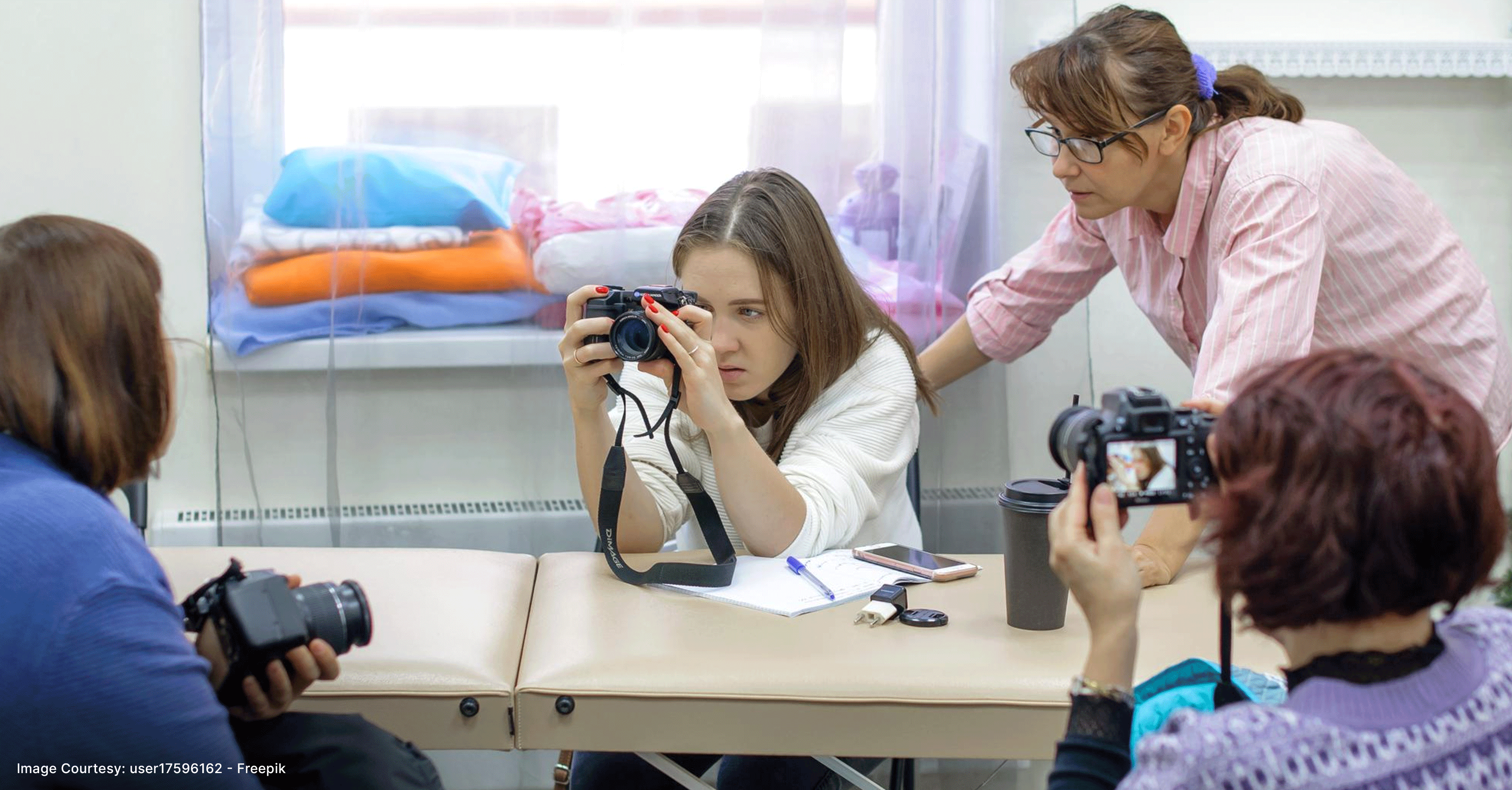The art of photography is a powerful medium that captures moments, narratives, and diverse cultures. As an art form, it continuously evolves, shaped by technological advances and societal changes. For emerging photographers, the journey to establishing themselves in the global art world can be challenging. Without proper support, many talented individuals might struggle to find the resources, platforms, and networks they need to showcase their work and develop their craft.
Photography foundations play a pivotal role in supporting emerging artists by offering financial aid, mentorship, platforms for exposure, and educational opportunities. This article provides a global overview of how these foundations help emerging photographers thrive in the competitive world of visual arts. We will also discuss how organizations like ZiiP Foundation promote new talents across different countries through their unique initiatives.
The Importance of Supporting Emerging Photographers
Emerging photographers are often those who are in the early stages of their careers, possessing immense potential but facing significant hurdles in terms of visibility, resources, and opportunities. These artists often bring fresh perspectives and innovative approaches to photography, offering the world new ways of seeing and interpreting visual narratives.
However, many emerging photographers face financial constraints, limited access to exhibitions, and insufficient networking opportunities. These barriers make it difficult for their work to gain recognition and for their talents to be nurtured. Without support, their voices might remain unheard, and their potential might never fully blossom.
Photography foundations recognize this gap and have made it their mission to support the next generation of visual storytellers. By providing grants, organizing exhibitions, and offering educational resources, these foundations help emerging photographers access the tools and networks needed to establish their careers and push the boundaries of visual art.
How Photography Foundations Support Emerging Artists
Photography foundations offer a wide array of support mechanisms for emerging artists. Below are the key ways in which these foundations contribute to the growth and success of young photographers:
1. Grants and Financial Support
One of the most significant challenges emerging photographers face is the lack of financial resources. Photography, particularly at a professional level, can be an expensive pursuit. From purchasing equipment to funding travel for shoots, the costs can be overwhelming for those starting out.
Photography foundations provide financial aid in the form of grants, awards, and scholarships to help photographers cover these costs. For example, organizations like the Magnum Foundation and the Alexia Foundation offer grants specifically for emerging photographers working on impactful visual stories. These grants provide much-needed financial support for photographers to undertake new projects, travel, and invest in their craft.
Such grants are often tailored to photographers working on social issues, documentary photography, or projects that aim to create a positive impact on society. This support not only helps photographers complete their work but also encourages them to use their talents for storytelling that matters.
2. Mentorship and Professional Development
Many photography foundations also offer mentorship programs that connect emerging artists with established photographers and industry professionals. Mentorship can be invaluable for young artists as they navigate the complexities of the art world, from technical skills to career development.
For example, the Joop Swart Masterclass, organized by the World Press Photo Foundation, selects emerging photographers from around the world to participate in an intensive week of mentorship with experienced photographers. These opportunities provide young photographers with guidance, feedback, and the chance to refine their creative vision.
Mentorship programs also help emerging photographers build their networks within the industry. They provide access to a community of like-minded artists and professionals who can offer advice, collaboration opportunities, and career support.
3. Exhibitions and Exposure
Exposure is critical for emerging photographers to gain recognition. Photography foundations often organize exhibitions, competitions, and festivals that provide platforms for young artists to showcase their work. These exhibitions not only offer visibility but also provide opportunities for emerging photographers to interact with potential buyers, curators, and the media.
The Prix Pictet award, for instance, is one of the most prestigious photography competitions focused on sustainability. It provides a global platform for photographers whose work addresses pressing environmental and societal issues. Emerging photographers who are selected as finalists gain significant exposure through the exhibition and publication of their work in international venues.
Similarly, the Sony World Photography Awards has a dedicated “Youth” category that highlights the work of young photographers from around the world, offering them a chance to be seen by a global audience. Winning or even being shortlisted in such competitions can significantly boost an emerging photographer’s career by providing them with international recognition and validation.
4. Residencies and Creative Retreats
Residencies provide emerging photographers with the time, space, and resources to focus on their work without distractions. Photography foundations often offer artist residencies that allow photographers to work on specific projects while living in a new environment. These residencies can be invaluable for photographers seeking inspiration, collaboration, and time to refine their work.
Programs like the Light Work Artist-in-Residence Program in New York and the Fabrica Artist Residency in Italy provide photographers with access to studio space, equipment, and a community of artists to engage with during their stay. These residencies often culminate in exhibitions or publications, offering emerging photographers further opportunities for exposure.
The Role of Foundations in Promoting New Talents Across Different Countries
Photography foundations operate globally, with many having specific initiatives tailored to promote new talents from diverse backgrounds and regions. These organizations understand the importance of representing a broad spectrum of voices in the world of photography. They work to ensure that emerging photographers from underrepresented communities and developing countries have access to the same opportunities as their peers from more privileged backgrounds.
Promoting Diversity and Inclusivity
Foundations such as the World Press Photo Foundation and the Magnum Foundation are known for their efforts to promote diversity in photography. They actively seek out photographers from regions that are often underrepresented in the global art scene, such as Africa, Asia, and Latin America. By providing grants, mentorship, and exhibition opportunities, these foundations help photographers from these regions gain international recognition and showcase their unique perspectives.
Additionally, many photography foundations have initiatives specifically aimed at supporting women in photography. Historically, women have been underrepresented in the photography world, but foundations are working to change this. For example, the Women Photograph organization provides grants and workshops to female photographers, ensuring that their voices are heard and their work is seen.
ZiiP Foundation’s Role in Promoting Emerging Talents
The ZiiP Foundation, based in India, is deeply committed to promoting new photographic talents on both a global and local scale. Through its various initiatives, ZiiP provides emerging photographers with opportunities to grow, learn, and gain recognition.
ZiiP Foundation’s Women in Photography project is a standout example of its commitment to diversity and inclusion. This initiative celebrates the contributions of women photographers worldwide, providing them with platforms to showcase their work and challenge the gender biases that have historically been prevalent in the photography world. By offering grants, workshops, and exhibition opportunities, ZiiP ensures that women’s visual narratives influence global discourse on culture and society.
Moreover, ZiiP’s residencies in the picturesque village of Zalor, Goa, are designed to inspire photographers by offering them time and space to work on creative projects. These residencies not only help emerging artists develop their skills but also encourage them to explore new ways of thinking and creating. Through international collaborations and workshops, ZiiP fosters cultural exchange, allowing photographers from different countries to learn from one another and expand their artistic horizons.
ZiiP Foundation’s Zalor Photography Biennale, set to be India’s largest photography event, further exemplifies its commitment to promoting emerging photographers. The biennale provides a platform for young photographers to exhibit their work alongside established artists, giving them access to a broader audience and potential buyers. This event is a significant opportunity for emerging photographers to gain recognition and establish themselves in the global photography scene.
Conclusion
Photography foundations play a crucial role in supporting emerging artists and preserving the future of the art form. Through financial aid, mentorship, exhibitions, and educational opportunities, these organizations provide young photographers with the tools they need to succeed. Foundations like ZiiP not only help photographers refine their skills but also ensure that diverse voices are represented on the global stage.
By promoting new talents across different countries, photography foundations contribute to a richer, more inclusive visual culture. Initiatives like ZiiP’s Women in Photography project and the Zalor Photography Biennale are just a few examples of how these organizations foster the growth of emerging photographers, ensuring that their work continues to shape and inspire the world.
As the art of photography continues to evolve, the support of photography foundations will remain indispensable in helping new talents emerge and thrive in the global landscape. These institutions are not just preserving visual culture—they are actively shaping its future.




